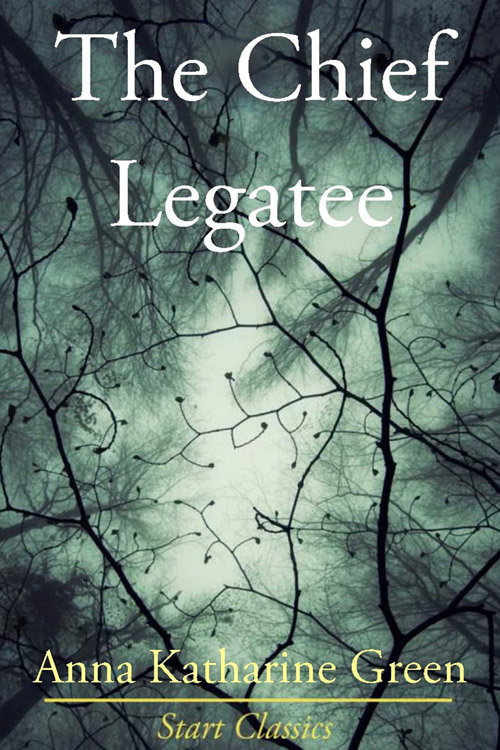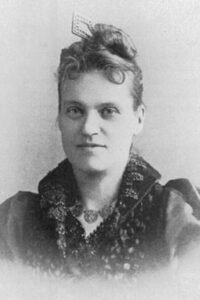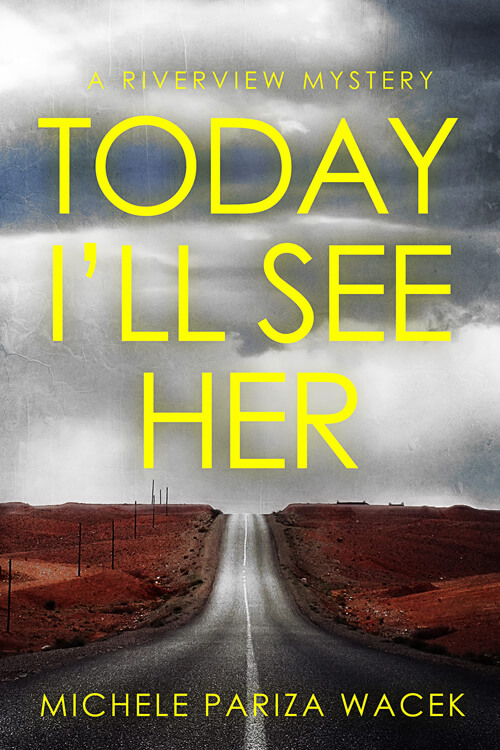
The Chief Legatee
An exclamation from within, a hurried step, and the door fell open. The figure which met their eyes was startling. Distress, anxiety, and an impatience almost verging on frenzy, distorted features naturally amiable if not handsome.
“My wife,” fell in a gasp from his writhing lips.
“We have come to help you find her,” Mr. Gerridge calmly assured him. Mr Gerridge was the detective. “Relate the circumstances, sir. Tell us where you were when you first missed her.”
Mr. Ransom’s glance wandered past him to the door. It was partly open. The manager, whose name was Loomis, hastily closed it. Mr. Ransom showed relief and hurried into his story. It was to this effect:
“I was married today in Grace Church. At the altar, my bride—you probably know her name, Miss Georgian Hazen—wore a natural look and was in all respects, so far as anyone could see, a happy woman, satisfied with her choice and pleased with the éclat and elegancies of the occasion. Halfway down the aisle, this all changed. I remember the instant perfectly. Her hand was on my arm, and I felt it suddenly stiffen. I was not alarmed, but I gave her a quick look and saw that something had happened. What I could not at the moment determine. She didn’t answer when I spoke to her and seemed concerned about getting out of the church before her emotions overcame her. This she succeeded in doing with my help, and, once in the vestibule, recovered herself so wholly and met all my inquiries with such a gay shrug of the shoulders that I should have passed the matter over as a mere attack of nerves if I had not afterwards detected in her face, through all the hurry and excitement of the ensuing reception, a strained expression not at all natural to her. This was still more evident after the congratulations of a particular guest, who, I am sure, whispered to her before he passed on. When the time came for her to go upstairs, she was so pale and unlike herself that I became seriously alarmed and asked if she felt well enough to start the journey we had meditated on. Instantly, her manner changed. She turned upon me with a look I have been trying ever since to explain to myself and begged me not to take her out of town tonight but to some quiet hotel where we might rest for a few days before starting on our travels. She looked me squarely in the eye as she made this request, and seeing in her nothing more than a feverish anxiety lest I should make difficulties of some kind, I promised to do what she asked. I bade her run away and get herself ready to go and say nothing to any one of our change of plan. She smiled and turned away towards her room but presently came hurrying back to ask if I would grant her one more favour.
Read or download Book
Anna Katharine Green
Anna Katharine Green (November 11, 1846 – April 11, 1935) was an American poet and novelist.
Biography.
She was one of the first writers of detective fiction in America and distinguished herself by writing well-plotted, legally accurate stories. Green has been called “the mother of the detective novel”.
Life and work
Green was born in Brooklyn, New York, on November 11, 1846. She was initially ambitious about writing romantic verses, so she corresponded with Ralph Waldo Emerson. When her poetry failed to gain recognition, she produced her first and best-known novel, The Leavenworth Case (1878), praised by Wilkie Collins and the hit of the year. She became a bestselling author, eventually publishing 37 books over 40 years.
On November 25, 1884, Green married the actor and stove designer and later noted furniture maker Charles Rohlfs (1853 – 1936). Rohlfs toured in a dramatization of Green’s The Leavenworth Case. After his theatre career faltered, he became a furniture maker in 1897, and Green collaborated with him on some of his designs. They had one daughter and two sons: Rosamund Rohlfs, Roland Rohlfs, and Sterling Rohlfs. Her daughter Rosamund married Robert Twitty Palmer. Green died on April 11, 1935, in Buffalo, New York, at 88. Her husband died the following year.
Critical response
Though Green’s book The Leavenworth Case is frequently cited as the first mystery written by an American woman, The Dead Letter by Seeley Regester was published earlier (1866). In a discussion of women writers of detective fiction, scholar Ellen Higgins in 1994 chronicled the work of Green as popularizing the genre a decade before Arthur Conan Doyle brought out his first Sherlock Holmes story. “I only found out afterwards that some people were a little upset with it because they don’t want to hear about women competing with the master”, Higgins said. Green is credited with shaping detective fiction into its classic form and developing the detective series. Her main character is Detective Ebenezer Gryce of the New York Metropolitan Police Force. Still, in three novels, he is assisted by the nosy society spinster Amelia Butterworth, the prototype for Miss Marple, Miss Silver, and other creations. She also invented the ‘girl detective’ in the character of Violet Strange, a debutante with a secret life as a detective. Indeed, as journalist Kathy Hickman writes, Green “stamped the mystery genre with the distinctive features that would influence writers from Agatha Christie and Conan Doyle to contemporary authors of suspenseful “whodunits”. In addition to creating elderly spinster and young female sleuths, Green’s innovative plot devices included dead bodies in libraries, newspaper clippings as “clews”, the coroner’s inquest, and expert witnesses. Yale Law School once used her books to demonstrate how damaging it can be to rely on circumstantial evidence. Written in 1878, her first book, The Leavenworth Case: A Lawyer’s Story, sparked a debate in the Pennsylvania State Senate over whether the book could “really have been written by a woman”. Green was in some ways a progressive woman for her time—succeeding in a genre dominated by male writers—but she did not approve of many of her feminist contemporaries, and she was opposed to women’s suffrage.
Legacy
In 2002, Buffalo Literary Walking Tours began an annual series of weekend walking tours highlighting authors with local connections. Along with Mark Twain, F. Scott Fitzgerald, Herman Melville, Taylor Caldwell, and others, green is included. Green’s short story “The Intangible Clue” featuring Violet Strange was adapted by Chris Harrald for the second series of BBC Radio 4’s drama series The Rivals and starred Jeany Spark as Violet Strange.






